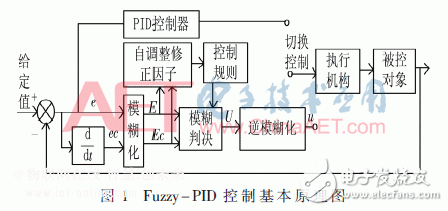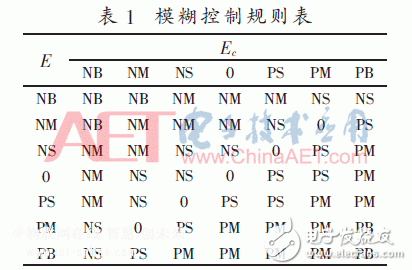The motion of the aircraft in the atmosphere has nonlinear, strong coupling, uncertainty and other characteristics. It is difficult to establish an accurate mathematical model and is susceptible to random disturbances such as wind disturbances. The aerodynamic parameters change drastically. Therefore, designing a reliable aircraft attitude control system is a necessary condition to ensure that it moves according to a predetermined trajectory. At present, the more commonly used aircraft attitude control technology adopts PID control, which is simple and reliable, and has stable performance. However, in some harsh environments, the attitude control accuracy and stability requirements of the aircraft are relatively high, and it is difficult to satisfy only PID or improved PID control technology.
Therefore, this paper combines PID control and Fuzzy control in the aircraft attitude control system. Fuzzy control is an intelligent control method that simulates human thinking. It does not rely on accurate mathematical models, and can better solve the control problems caused by inaccurate and random interference of aircraft models. However, the fuzzy control is difficult to solve the steady-state error of the system itself, and the PID control can make up for this deficiency. At the same time, in order to improve the performance of the fuzzy controller, an automatic correction factor is added to adjust its parameters online to ensure that the control system can obtain optimal dynamic performance in a wide range.
1 Fuzzy-PID controller design
1.1 Overall design
The basic principle of Fuzzy-PID control is shown in Figure 1.

The control system consists of two parts: the fuzzy controller and the PID controller. The error and error rate of change are selected as the system input, and the output is the system control amount u. The control system determines which control algorithm to use based on the magnitude of the deviation e. When the error is too large or large, the fuzzy control algorithm is used to increase the control action to suppress overshoot, improve the response speed of the system, and make the actual response of the system reach the given value as soon as possible; otherwise, use the PID control algorithm to reduce the system steady state. Error, improve static characteristics. It has better control performance than separate fuzzy control or PID control. The design of the PID controller is not repeated here.
1.2 Fuzzy controller design with automatic correction factor
In the process of designing the fuzzy controller, it is mainly divided into five parts [1]: (1) determine the structure of the fuzzy controller; (2) reasonably select the quantization factor and the scale factor to determine the input variable and the output variable (3) Determine the fuzzy language value of the input and output and the membership function; (4) Establish the fuzzy rule and select the approximate reasoning algorithm; (5) Determine the defuzzification method. According to the knowledge and experience accumulated by the operators, establishing fuzzy control rules is the core work. The performance of the fuzzy controller mainly depends on this.
Let the fields of input quantity e, ec and output quantity u be E, EC and U respectively, and the fuzzy subsets usually use {negative large (NB), negative medium (NM), negative small (NS), zero (0). , Zheng Xiao (PS), center (PM), Zhengda (PB)} to express. The general principle of selecting the control quantity is: when the error is large or large, the control quantity is selected to eliminate the error as soon as possible; when the error is small, the selection control quantity should be based on the stability of the system to prevent the system from overshooting. According to the knowledge and experience, the control rules of the fuzzy controller are summarized, as shown in Table 1.

The quantization factors of the deviation e and the deviation change rate ec are respectively K1 and K2, and the proportionality of the control quantity U is K3, which largely affects the performance of the fuzzy controller. The larger the K1 is, the larger the overshoot of the system is, and the longer the transition process is. On the contrary, the slower the system changes, the lower the steady state accuracy. The larger K2 is, the smaller the system overshoot is, the smaller the output change rate is, but the slower the system changes; otherwise, the system response is faster, but the overshoot is increased. K3 mainly affects the dynamic performance of the system and is related to the actual control object.
In the actual work, in order to make the system respond quickly, reduce the overshoot, introduce the correction factor n on the conventional fuzzy controller, adjust the n value in the control process, and change the weighting degree of the deviation E and the deviation change rate EC in real time online. Thereby achieving better control effects.
Silicon Transistor are solid-state semiconductor devices with functions such as detection, rectification, amplification, switching, voltage regulation, and signal modulation. The transistor acts as a variable current switch and can control the output current based on the input voltage. Unlike ordinary mechanical switches (such as Relay and switch), transistors use electrical signals to control their opening and closing, and the switching speed can be very fast. The switching speed in the lab can reach more than 100GHz.
Silicon Transistor, Power Transistor, IGBT Transistor, N-Channel Transistor, PNP Transistor
YANGZHOU POSITIONING TECH CO., LTD. , https://www.cndingweitech.com